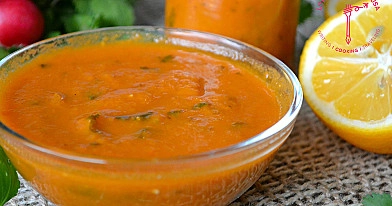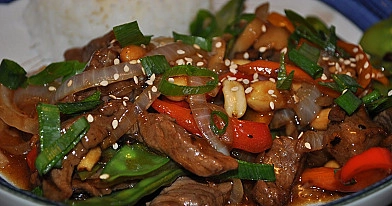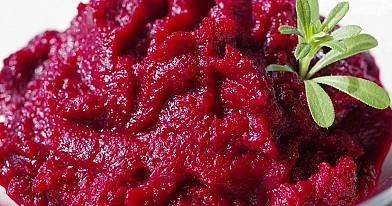
Best apple and tomato chutney

This Apple and Tomato Chutney is a lush, tangy-sweet condiment combining tender apples, ripe tomatoes, warming spices, and the sharp punch of malt vinegar. It has roots in traditional British preserves and has stood the test of time, passed down through family recipe books and tested in many kitchens. I have prepared it many times, slowly simmering the mixture until it develops deep flavor, and each time I have been rewarded by the rich aroma filling the house and the complementary contrast when served with sharp cheeses or roasted meats.
Because this recipe was handed down through generations and also adapted by home cooks around the world, it’s been refined to balance sweetness, acidity, heat, and texture — so you’ll notice how the sugar and vinegar play off each other, the apples help thicken, and the spices give warmth without overwhelming.
Possible ingredient alternatives:
- For apples: you might use Granny Smith, Braeburn, or Honeycrisp instead of generic baking apples to get a firmer texture or varied flavor.
- For malt vinegar: you can substitute cider vinegar or white wine vinegar if malt vinegar is unavailable.
- For sugar: brown sugar, raw cane sugar, or coconut sugar can offer more depth than plain white sugar.
- For sultana raisins: golden raisins or currants can be used.
- For curry powder: use a mild curry blend or even garam masala if you prefer a different spice profile.
- For cayenne pepper: a pinch of red pepper flakes or paprika with a bit of chili powder can work.
Cooking tips for the chutney:
- Use a heavy-bottomed large saucepan to ensure even heating and avoid scorching at the bottom.
- Stir occasionally during the long simmer to prevent sticking, especially after the mixture thickens.
- If the apples begin to break down too much, reduce stirring or use larger slices.
- Taste during cooking to adjust sugar, salt, or heat to your preference.
- Wrap mustard seed in cheesecloth or a spice bag so it can infuse flavor but be removed cleanly.
- Sterilize jars and containers fully before sealing to ensure safe preservation.
Ingredients
- Apples (peeled, cored and sliced): 2 pounds (~900 g).
- Water: 2 cups (~475 mL).
- Mustard seed: 1 tablespoon (~15 g).
- Tomatoes (sliced): 2 pounds (~900 g).
- Onions (large, chopped): 2 large (~300-400 g total).
- Garlic (clove, chopped): 1 clove.
- Sultana raisins: ½ cup (~75 g).
- White sugar: ¾ cup (~150 g).
- Curry powder: 5 teaspoons.
- Cayenne pepper: 1 teaspoon.
- Salt: 4 teaspoons.
- Malt vinegar: 2½ cups (~600-625 mL).
Roughly 1 gallon / ~3.8 L):
- 1. I placed the apples and water into a large saucepan and brought them to a boil, then reduced heat so that the apples simmered gently. I cooked them until they became tender, about 25 minutes, stirring occasionally and adding more water if needed to prevent drying.
- 2. I wrapped the mustard seed in cheesecloth (or used a spice bag), inserted it into the saucepan with the apples. Then I stirred in tomatoes, chopped onions, garlic, sultanas, sugar, curry powder, cayenne pepper, salt, and the malt vinegar, ensuring all sugar dissolved completely.
- 3. I brought that whole mixture up to a boil once more. After that, I reduced the heat and let it simmer uncovered for about 3 hours and 30 minutes, stirring from time to time until the chutney became thick and richly textured.
- 4. When the chutney reached desired thickness and flavor, I removed and discarded the wrapped mustard seed.
- 5. I transferred the hot chutney into sterile jars or containers, sealed them properly, and allowed them to cool before storing or serving.
- 6. Chef’s advice: To achieve the best texture and flavor, I recommend selecting apples that are firm and not overly sweet so that they hold some shape during the long simmer. Also, using malt vinegar gives a depth that is hard to replicate exactly, but cider vinegar makes a fine substitute if you prefer a fruitier tang. Always taste toward the end — you may need to tweak sugar or salt depending on the sweetness of your tomatoes or apples.
- 7. Because I have tested this recipe many times over seasons (both in the summer when garden tomatoes are ripe and in colder months using greenhouse tomatoes), I trust that this balance works well in different conditions.
Recipe Directions
FAQ
How should I store homemade apple and tomato chutney for maximum freshness?
From tested preserving practice, the chutney should be stored in sterilized, airtight jars and kept in a cool, dark place such as a pantry or cellar. Properly sealed, it can last up to 12 months. Once opened, always refrigerate the chutney and use it within 3–4 weeks. Darkness and cool temperatures slow down microbial growth and preserve flavor stability.
Can apple and tomato chutney be frozen for long-term storage?
Yes, chutney freezes very well. For best results, divide it into smaller airtight containers or freezer bags so you can thaw only the amount you need. Frozen chutney maintains both flavor and texture for about 6 months. Always defrost slowly in the refrigerator to avoid excess water separation, which can affect the consistency.
Why does chutney sometimes turn out too runny or too thick, and how can I adjust it?
A runny chutney usually means it was not simmered long enough, or the tomatoes released extra moisture. Simmer uncovered on low heat until excess liquid evaporates. If the chutney becomes too thick, add a splash of vinegar or water and stir it in while reheating. Apples naturally provide pectin, which helps with thickening, so choosing firm apple varieties also improves texture balance.
Is apple and tomato chutney suitable for gluten-free or lactose-free diets?
This chutney is naturally both gluten-free and lactose-free, since it contains only fruits, vegetables, spices, sugar, and vinegar. The only caution is with spice blends such as curry powder, which should be checked for additives that may contain gluten. From nutrition and culinary expertise, the recipe fits well into gluten-free, dairy-free, and plant-based diets without adjustments.
What are the most common mistakes when making apple and tomato chutney?
One frequent mistake is cooking the chutney too quickly over high heat, which risks burning and bitterness. Another is skipping jar sterilization, which shortens shelf life. Some cooks also forget to remove the mustard seed pouch in time, resulting in an overpowering flavor. From experience, slow simmering, patient stirring, and careful seasoning adjustments produce the best results with balanced sweetness and tang.
Should chutney be served immediately or aged before eating?
Chutney can be eaten right after cooking, but culinary tradition and tested experience show it improves dramatically after a resting period. Letting the chutney age for at least one week allows the flavors of fruit, vinegar, and spices to meld into a deeper, more complex profile. This maturation process explains why chutney tastes smoother and more balanced after sitting, especially when paired with cheese or roasted meats.



